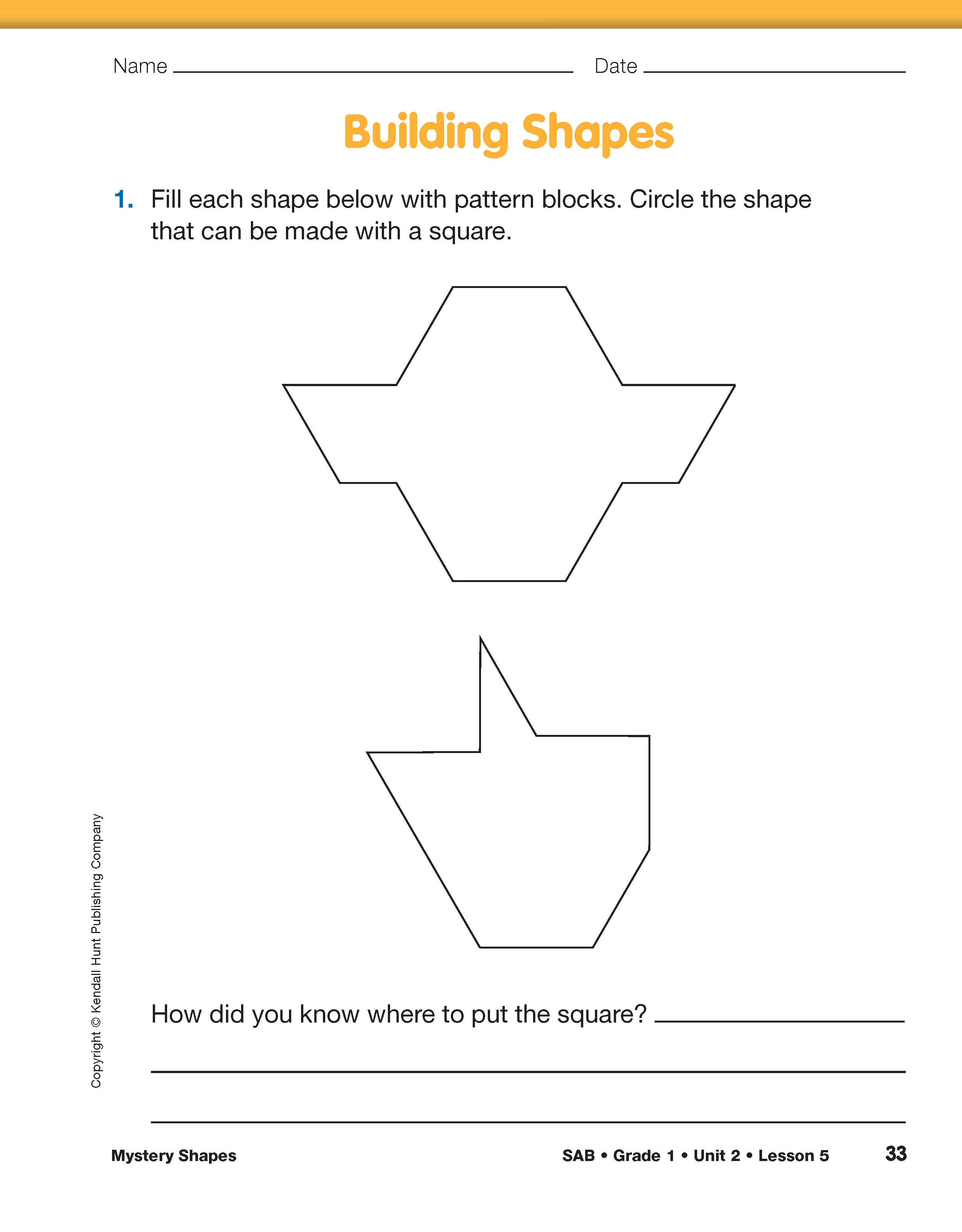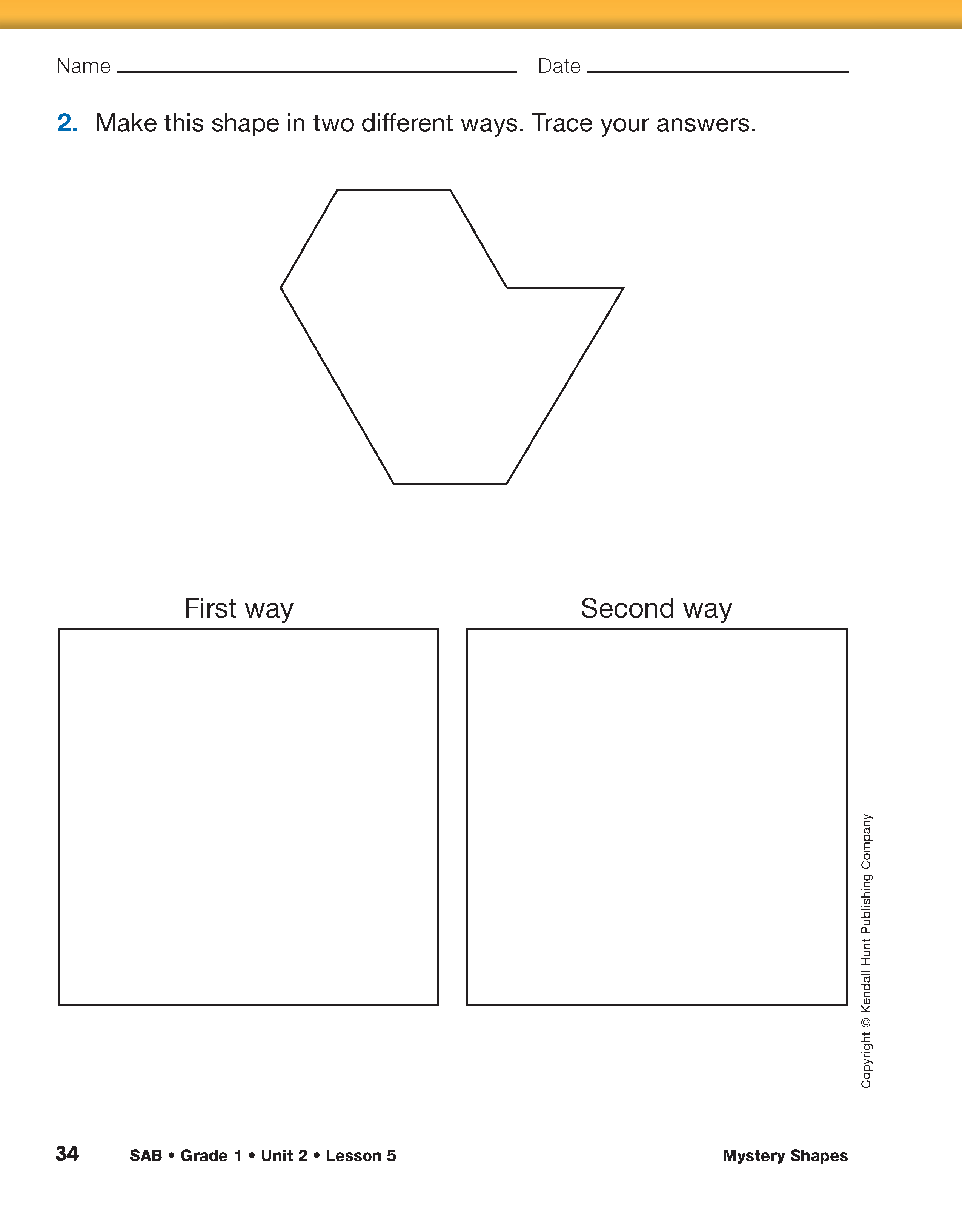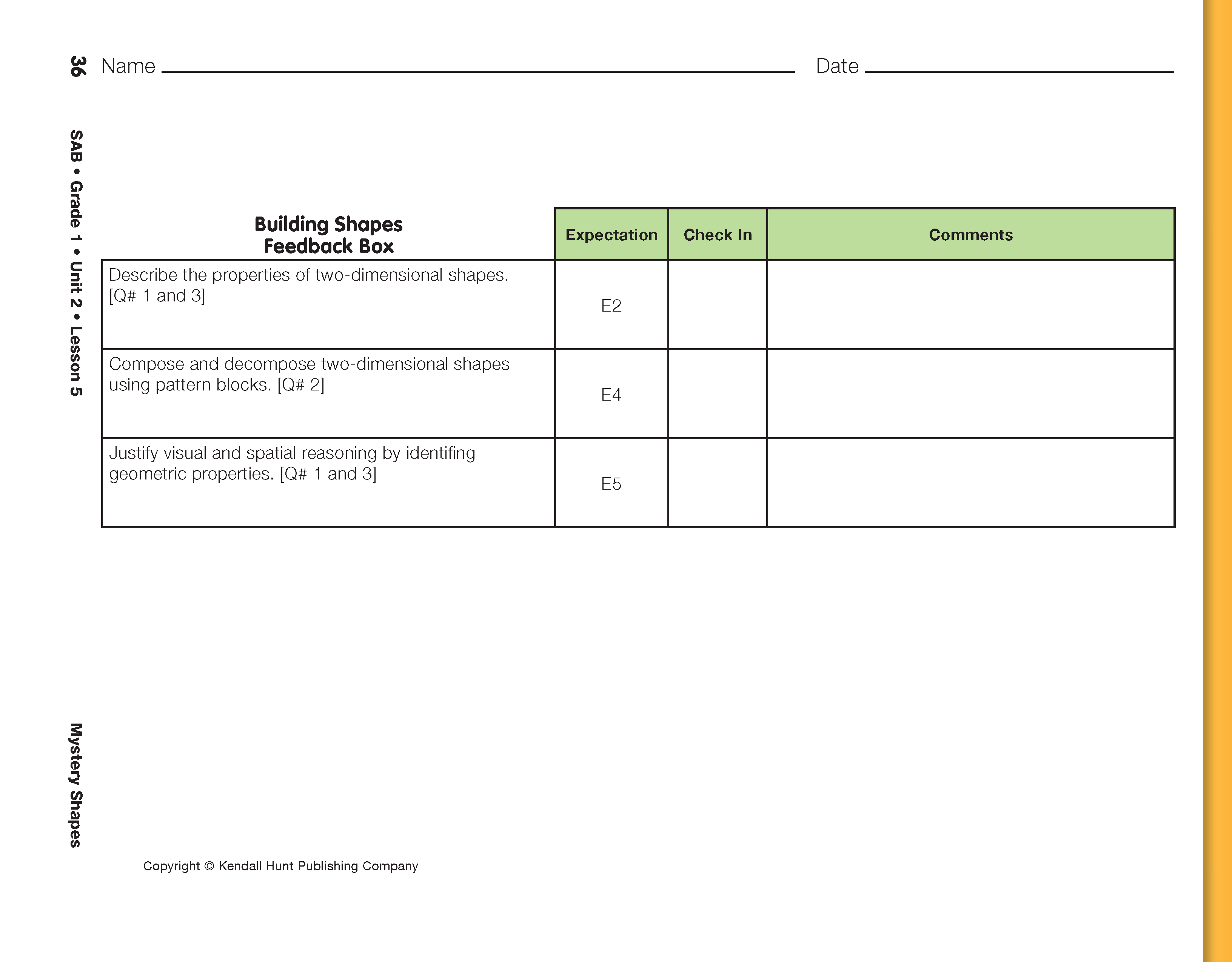Mystery Shapes
Est. Class Sessions: 2Summarizing the Lesson
Does a Square Fit? Use the Will a Square Work? Master to display additional shapes. Tell students you are going to display a figure and ask if they think at least one square pattern block is used to make the shape. Display each shape one at a time and tell students how many blocks are used to compose each. Suggest that students build the shapes to determine their answers. See Figure 3.
Ask:
For Shape A, students should recognize the square corner in the upper left and determine that a square is needed to make this shape. They should also be able to determine that the block on the bottom has four sides and recognize that the blue rhombus is the remaining four-sided block that matches the side and corner length. The remaining block at the top has three sides, making the triangle pattern block the only possible shape that will work.
Students should recognize that a square does not work for Shape B. They can compare the size of the corners to determine that a square is not used in any corners. Nor is there any combination of blocks that can be used with a square on the interior of the shape.
A square does not work for Shape C. Students should recognize that the shape at the bottom is a hexagon and that no combination of three blocks can be used with a hexagon and a square to compose this shape
Build More Shapes. Tell students to complete the Building Shapes pages in the Student Activity Book. Read aloud the directions for Question 1 and allow time for students to complete their answers. For Question 2, remind students of some the strategies they have used to make shapes (e.g., match sides and corners, substitute pattern blocks).
In Question 3, students should recognize that Kim and Ana have used the same combination of pattern blocks, but one is a rotation of the other. Sam used two triangles in place of the blue rhombus for a total of 6 blocks instead of the five used by Ana and Kim.


















